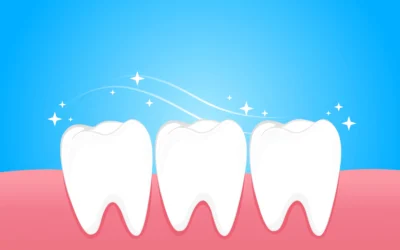While a royal coronation sounds exciting, a dental crown might not be quite as thrilling. Generally, there are no parades or national holidays when you get a dental crown, but you will certainly feel better.
A dental crown is a sort of cap that sits on a damaged or decayed tooth. If the damage comes from decay, you will generally need a root canal first to clear the root of all infection before putting on the crown. If there was an accident and the tooth is damaged beyond repair, a crown can be a way to restore the look of the original tooth.
In either case, a mold is taken using the natural tooth so that the crown will look as natural as possible in your mouth. Then, the damaged tooth is sanded down so the crown can fit snugly on top.
If your Atlanta area cosmetic dentist does not have a lab in the office, then the crowning process will happen in two steps.
- First, the mold is made and sent off to be used in creating the crown. Meanwhile, a temporary crown is put on to hold the place until the permanent crown is ready.
- At your second appointment, the temporary crown is removed and replaced with a permanent crown.
Whether your “crowning” takes one visit or two, there are some steps to take before and after the process to ensure that your crowns add to your healthy smile for a very long time.
Getting Ready
There are a few different materials available to use for your dental crowns:
- Metal
- Porcelain
- Resin
- Ceramic
The location of the crown will affect which material you choose. Metal is generally used for teeth in the back of the mouth since the color is so different. Porcelain, resin, and ceramic each has different advantages and disadvantages, depending on your age and budget. One thing they have in common is that they can be tinted to match your natural tooth color.
Once they are tinted, however, their color cannot change. So, if you whiten your teeth after getting the crown, then your original teeth might be quite a bit lighter than the crown. To avoid this mismatch, it is a good idea to get your teeth whitened before getting the crown so your teeth are as white as possible when the dentist is matching the crown to your teeth. Then, if your teeth change color at all, a whitening will bring everything back to a lovely matching color.
What Comes Next?
The crown procedure is not a painful or intrusive one. The hard part–root canal or major damage control–has already been done. Now it is just getting the mold and fitting the crown. Whether it is a temporary crown or a permanent one, the immediate aftercare is pretty much the same.
Within the first twenty-four to forty-eight hours there might be some mild discomfort and swelling. Ice can help, as well as warm salt water rinses. This can also wash away food particles that might get stuck, which is especially helpful with the temporary crowns since they won’t be as snug as your permanent crown.
There are also a few things to avoid in the immediate hours after the dental crowns are placed on the damaged tooth. Chewing gum and other sticky foods should be avoided, especially if you have temporary crowns at first. They can lift the crown out of place, which would cause all sorts of trouble. Also, go easy on the Laffy Taffy, if you’re brave enough to eat it in the first place. That stuff can almost pull out a real tooth, never mind a newly applied crown!
Take it easy on temperature as well. Extremely hot or cold food and drink could cause damage to the crown. The swing in temperature might cause cracking or loosening, which could lead to damage.
Generally, you’ll care for your new tooth like you would the rest of your mouth. Keep up with the brushing and flossing, just be gentle for that first day or two. Give everything some time to settle.
Down the Road
Once the permanent dental crown is in place, and you’ve passed that first healing period of a few days, then you basically care for your new tooth as you care for your others, though perhaps a little better now than before While a crown can make you feel royal, this new crown might also inspire you to be a bit more diligent in your dental routine.
Stick to those basics:
- Brush
- Floss
- Rinse
- See Your Dentist
Once the crown is secure, you can brush normally. When you floss, push down and hug the tooth side to side, then pull the floss out from the side. Do not pull back up. Pulling it back up over and over will eventually dislodge it. Crowns are a pain-free solution, but they certainly are not free. Ideally, you should take good care of your crown by taking good care of the rest of your teeth.
Even in the long term, it is best to watch what you eat and drink a little more carefully. Not only are sugary and sticky foods not helpful in keeping your mouth healthy, but they can also loosen a crown, even a permanent one. And all those sticky goodies: caramel popcorn, taffy, gum, etc. can take hold on a crown and create some unwanted wiggle room, which could invite food, bacteria, or infection.
Stay in touch with the dentist. They will keep an eye on that crown and the teeth that surround it. Their trained eyes can spot problems you might miss and help avoid any big pain (or bills) down the road. As soon as that crown is on, set up your next dentist appointment.
While you might not receive any royal gems or curtsies when you are crowned in the dental office, you will feel better about your smile. So, feel free to smile and wave as you leave the office, knowing exactly how to care for your new crown, everyone should feel like royalty once in a while.



